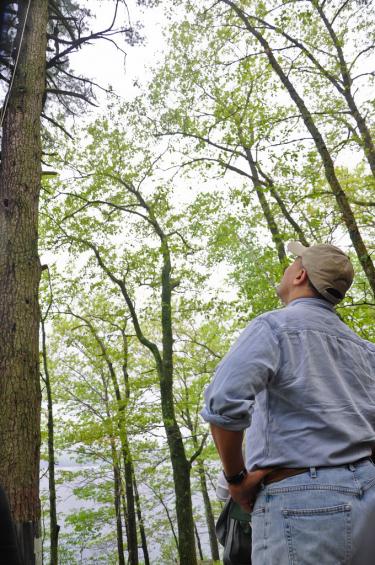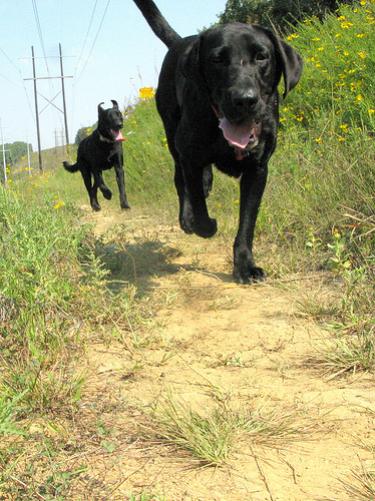Wildlife Watching Dos and Don’ts
To make the most of your wildlife viewing, don't forget to look UP!
When you head out to look for wildlife in the woods, keep these tips in mind:
- Dress comfortably for the weather. And wear neutral colors to blend in with your surroundings better. (Except during hunting season.)
- Protect yourself against ticks and insect bites. Wear long pants and long sleeves if you are in a tick-prone area. Wear insect repellent.
- Pack your binoculars, spotting scope, or the telephoto lens for your camera. Animals are best enjoyed from a distance. In fact, you'll have better success if you use trees or shrubs as a screen between you and wildlife. Use binoculars or a zoom lens to get close up.
- Leave early and/or stay out late. Many animals are most active at dawn and dusk.
When you're out in the woods searching for animal activity, keep the following in mind:
- Be patient. Watching animals in the wild is different from visiting a zoo. You may have to wait a long time, or you may not see anything at all on a particular outing. .
- Use all your senses. Sometimes if you just sit quietly with your eyes closed, your ears or your nose might pick up clues to a wild animal's presence.
- Look around, up and down. Wildlife is everywhere. The insect world itself is complete with predators, plant eaters, and scavengers. Sometimes the most interesting wildlife drama in the woods is right at your feet.
- Be quiet and be still. Animals are cautious. Let them see and hear as little of you as possible. Wear clothing that don’t rustle, and shoes that make less sound.
- Learn the habits of the animals you would like to see. Knowing what they like to eat, where they live, and when they forage will help you be in the right place at the right time. Also watch for animal tracks and other signs that animals leave in the woods. With experience, you'll know what animals ar around from the signs they leave in your woods.
To get the most enjoyment out of your wildlife-watching outing, and to make it as safe as possible for both you and the wildlife, please don't do the following:
- Don’t wear anything with a heavy scent."Sorry, happy dogs; unless you're on a leash, you'll have to stay home while we are looking for wildlife."
- Stay away from the animals. Never chase, follow or approach wildlife, and don't touch them. Even if it’s cute, and doesn’t look like it can hurt you. Every animal can, and will, defend itself from threats.
- Don’t feed the animals. The wrong food can harm them. Groups of animals at artificial feeding sites spread disease. And animals used to human food can harm people while searching for that food.
- Don’t bring your dog, or if you must, keep your dog on a leash and don’t let it harass wildlife.
- Don’t pick up animals or take them home. Resist the temptaton to "save" baby animals. Mom is usually watching from a safe distance. Besides, caring for wildlife is complex and is best left to licensed wildlife rehabilitators. Keeping wildlife as a pet is illegal in most places.
- Manage your woodland to provide food for animals by planting or encouraging fruit and nut trees, and bushes and other plants that provide berries.
- Leave dead and dying trees standing, when possible, to provide homes and food for wildlife.
Find Out More
- Read this interesting article from Northern Woodlands magazine to learn from the experiences of a vetaran wildlife watcher.
Previous page
Next page
How can I get more tips?
It’s simple! Enter your email below.


